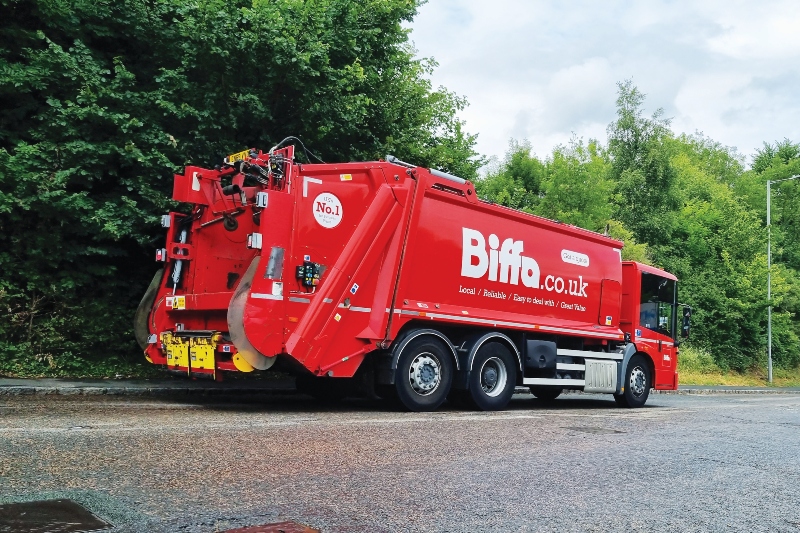

A climate emergency has been declared by over 300 local authorities in the UK, and nearly two-thirds of councils in England aim to be carbon neutral up to 20 years before the national deadline of 2050.
Deadlines this tight mean that local authority fleet managers can’t just make long-term plans to replace existing vehicles with battery-electrics at end of life: they must also examine what can be done to reduce the immediate impact of the current fleet.
Waste collection and recycling vehicles have a key role to play in this. The size of the vehicles in use and the nature of the work undertaken means that even a small percentage reduction in the fuel consumption of an authority’s refuse collection fleet will yield a worthwhile saving in CO2 emissions.
Responding to demands from refuse collection vehicle (RCV) fleet operators, Allison has been informally consulting, from its OEM-neutral perspective, on powertrain-related interventions that leverage technical advances to reduce the fuel consumption and service costs of existing RCVs and embed energy savings when replacement vehicles are ordered.
This package has been developed with Biffa, the UK’s leading sustainable waste management business.
The first step is the installation of Allison’s Fuel Sense 2.0 transmission software to in-service vehicles. In trials with Biffa, this was found to yield a fuel saving of up to 9%. While this software is standard on new Allison-equipped vehicles, it can also be installed as a mid-life update on existing vehicles. The fuel savings generated will more than cover the cost of the upgrade.
It uses a sophisticated algorithm to determine the optimum gear-shift points to balance performance and fuel economy. Operators can also select a Neutral at Stop feature, which reduces parasitic drag when the vehicle is stationary or coasting at low speed; and a customisable Acceleration Rate Management facility which mitigates over-aggressive acceleration by controlling the engine’s torque.
In comparative trials involving six Biffa Dennis Eagle Elite RCVs undertaking commercial and residential work in two different urban locations, Fuel Sense 2.0-equipped trucks delivered fuel consumption and consequential CO2 reductions of up to 9% compared to their unmodified equivalents on the same duty cycles.
Biffa Municipal’s Fleet Category Manager Steve Lea said the cost of the Fuel Sense 2.0 upgrade would be paid back by fuel savings in just four months. ‘Fuel Sense 2.0 is expected to reduce carbon emissions from the Biffa fleet by 1.6 million kilograms per year and will cut our fuel bills by over £600,000 a year,’ he said.
Allison Transmission estimates that there are around 6,000 RCVs in service in the UK and Ireland that would benefit from similar savings if upgraded to Fuel Sense 2.0. Such an upgrade would save a staggering £10m in fuel costs per annum.
Further savings may be realised if transmission service intervals are extended to take full advantage of advances in lubricant and materials technology, rather than following previous standard practice.
Biffa has extended the fluid and filter change intervals on its automatic gearboxes from the first of 12 months/600 operating hours/15,000km to the first of 36 months/3,000 operating hours/120,000km. On the Biffa fleet of 1150 Allison-equipped Dennis Eagle and Mercedes-Benz vehicles, this yielded a saving of 33,500 litres of transmission fluid a year. With labour, filter-replacement, and oil-disposal costs taken into account, this has saved the operator £200,000 a year with no reported impact on reliability.
On the replacement vehicle front, RCVs are traditionally supplied with deep-reduction drive-axle ratios for ease of low-speed operation, especially in hilly urban terrain. However, diesel-engine manufacturers have poured considerable resources into developing high-torque, low speed engines for the benefits they yield in terms of fuel economy, and noise and emissions reduction.
Allison’s transmissions feature Continuous Power Technology, which effectively further boosts engine performance at low speeds, meaning higher final-drive ratios can be specified, which in turn reduces fuel consumption and noise.
Working in conjunction with Biffa, and using its industry-leading iSCAN software, Allison Transmissions established that the 270, 300 and 350 hp Mercedes-Benz Econic RCVs on the operator’s fleet could effectively run with drive-axle ratios of 6.0:1 rather than the 6.84:1 currently specified. Real life operation over more than 690,000 miles has seen the vehicles deliver a 2.4% fuel saving.
Biffa’s Head of Fleet Development, Darren Judd, points out that every 100 rpm reduction in engine speed yields a fuel saving of 1%. Over the life of a fleet of RCVs, this equates to a significant total fuel saving.
This article was first published in the winter issue of LAPV.